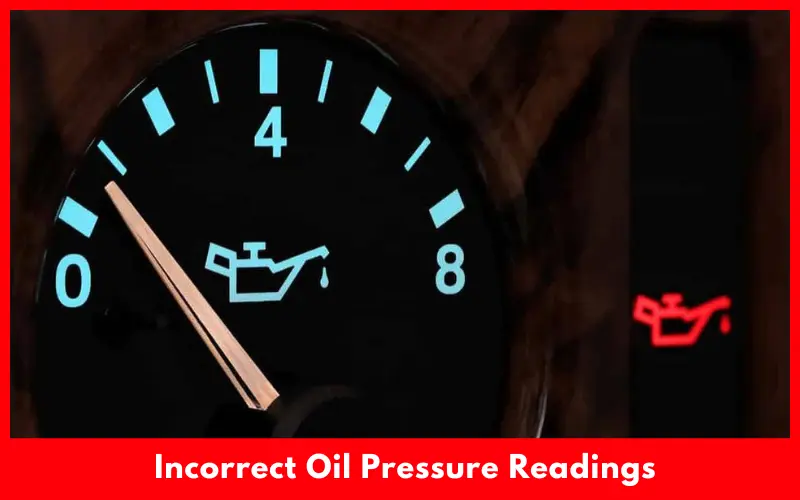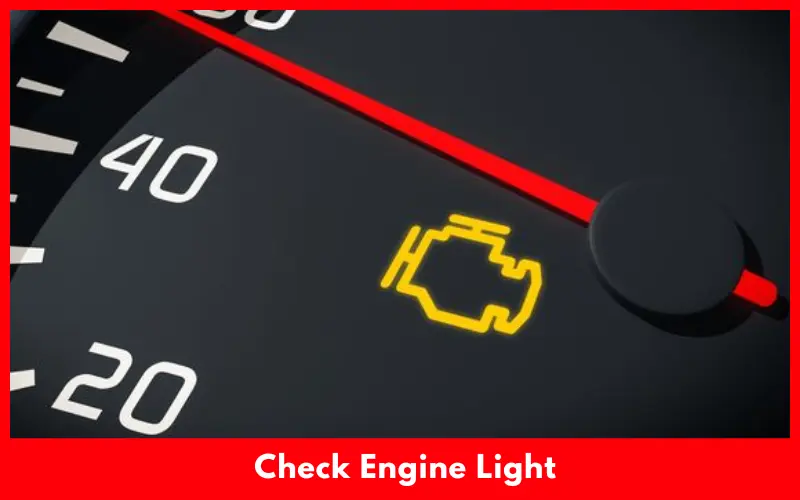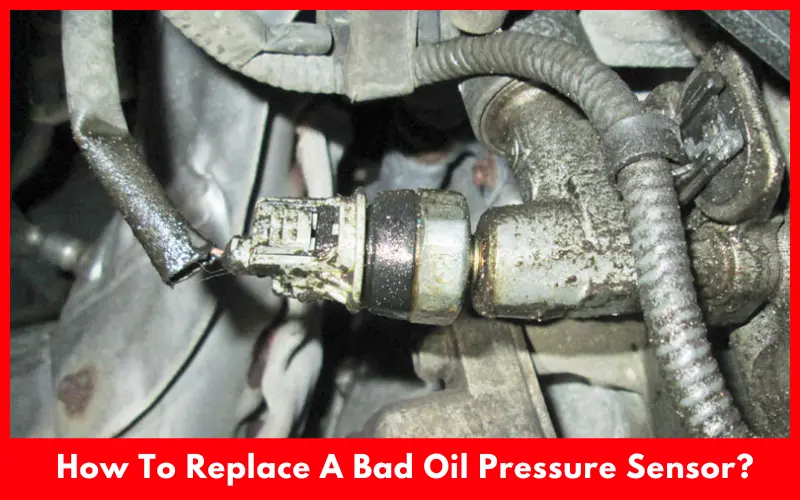A bad oil pressure sensor leads to wrong oil pressure readings, oil leaks, check engine light etc. But can a bad oil pressure sensor cause rough idle? Yes, a bad oil pressure sensor can lead to engine misfire and rough idle.
An oil pressure sensor, also known as oil pressure switch or oil pressure reader is a vital component of the engine management system. It transfers information from the engine and sends it to the car ECU or instrument cluster.
Article Summary
Why Does A Bad Oil Pressure Sensor Cause Rough idle?
In case of a worn out or misbehaving oil pressure sensor, it is likely to provide the wrong signal or data to the engine control unit or the gauge cluster. undefined
Incorrect Oil Pressure Readings
The oil pressure sensor might send a false report that the oil pressure is low inside the engine due to its failure. ECU is told about the low oil pressure and then the speed of the idle engine is adjusted to reduce the oil consumption.

This is due to the fact that the idle process cannot be always smooth and might be bumpy as the engine is trying to keep the constant speed.
Engine Misfires
Sometimes the oil pressure sensor would generate the oil pressure readings very inconsistently if it were malfunctioning. This kind of condition may provoke the ECU into postponing the gasoline delivery or sparking timing, which ultimately can lead to engine misfiring and unsmooth idling.
Engine Protection Measures
Today, engines of these cars are fitted with advanced safety systems that identify engine problems, low oil pressure being one of them. If the ECU indicates that the oil pressure that was obtained from the faulty sensor readings is below normal values, engine limp mode or engine protection mode will be activated that will cause the engine to run roughly or idle poorly until the issue is solved.
Signs Of A Bad Oil Pressure Sensor
If your oil pressure is low, check for the symptoms since the sensor might require replacement or further intervention. Here are some common signs of a bad oil pressure sensor. Here are some common signs of a bad oil pressure sensor:
Fluctuating Oil Pressure Readings
Documented error may occur when oil pressure readings are displayed rather irregularly on a gauge. You may see the oil pressure gauge varying in the range between high and low pressure at the times the engine is working in a good mood and badly as well.
Low Oil Pressure Warning Light
This sensor can one day make the engine control unit (ECU) to illuminate low oil pressure problem warning light if it is triggered by incorrect oil pressure signals from the oil pressure sensor. Sometimes , when there is a danger , this caution light will come on. This is a sign that there is not enough oil to create circulation or pressure above the safe limit.
Rough Idle
An incorrect oil pressure sensor can result in a poor engine performance that leads to the engine working with ups and downs. This makes the engine struggle to stabilize at idle and faint vibrations or jitteriness as a result when the vehicle is stationary are observable.
Engine Misfires
In some things it will be a bad oil pressure sensor that will give irregular drops in oil pressure readings. It can make ECM infiltrate to disrupt fuel supply or retardation of ignition timing, which leads to the misfire. There might be a tendency to lag, drop the tongues, or have no acceleration power.
Engine Noise
Oil drain will give rise to the inadequate lubrication of engine components, and in turn, develop frictions, as well as wear. This might result in engine knocking or clicking/shake noises at idle or load times, specifically when the engine gets started.
Oil Leaks
On a faulty or damaged oil pressure sensor the sensor body develops around the stem or electrical connector. If you find oil blockage or leaking from the sensor connection point or oil contamination on the nearby components you probably attended.
Check Engine Light
Modern motors that are fitted with onboard diagnostics (OBD) are able to light up the CHL (Check engine light) indicator when the oil pressure sensor does not work properly. The ECU intuitively displays the detected abnormality in oil pressure and sends related fault codes to the onboard computer, which can be read/retrieved by a diagnostic scanning tool.

As mentioned, these symptoms could potentially indicate a problem with your emissions system. Therefore, if you notice them it’s highly likely that you need to get your car checked out by a reliable technician or mechanic.
They provide the most accurate diagnosis of why your check engine light turned on and whether the problem is to be fixed by replacing the oil pressure sensor or by checking out other underlying issues that are also affecting the engine functionality and reliability. The early identification of these symptoms will make it possible to prevent the expensive damage in the engine that may arise later.
How To Replace A Bad Oil Pressure Sensor?
Tools and Materials Needed:
- New oil pressure gauge.
- Wrench or Socket set.
- Ratchet.
- Plain cloth or strip.
- Safety goggles (optional)

Organize The Car
Park on a flat ground and apply the parking brake. Let the engine cool down until it will not burn you from the hot engine components for safe driving.
Find The Oil Pressure Sensor
Check your car manual or the Internet to determine the place of the oil pressure sensor. It is generally designed to be installed on or near the engine block, usually just next to the oil filter or at the bottom of the engine block. Search for the bulb as it is electrical and screwed on the body together.
Turn Off The Electrical Connection
Pay more caution while unplugging the electric connector that is in contact with the oil pressure sensor. In order to open the buckle you may be required to make a hit on a tab or pull a clasp. First, pay attention to the condition of the connector and in case of any signs of damage or corrosion clean it.
Dismount The Old Oil Pressure Sensor
Tighten a socket wrench or a kit of sockets so that the old oil pressure sensor can be removed from its mounting clips. With the sensor turned counterclockwise, wiggle it around until it is loose from the engine block.
Know that the oil leakage can happen when the sensor is removed. Have a towel or rag strategically placed to eliminate dripping.
Install A New Oil Pressure Sensor instead Of Old
Apply a tiny amount of new engine oil to the oil pressure sensor receiving end. Carefully thread the new sensor through the hole, insert it by hand, and fix it in with a wrench or socket. Make certain not to over tighten as it could cause serious damage. Insert the electrical connector into the hole of the new sensor till it makes a click sound.
Substitute The Technique
With the first start of the engine, keep an eye on the oil pressure gauge or warning light on the instrument panel how it reacts. Verify that the oil pressure readings are normal and consistently in the normal range. Find out if the new sensor is leaking around in any particular place. If there are any leaks, shut off the engine and then check the installation again.
FAQs
Can An Oil Pressure Sensor With Fault Go Wrong And Cause Engine Problems?
The reason for this can be a simple oil pressure sensor which is responsible for other engine problems as well. Here are instances of engine problems that may arise from such lethargy: rough idle, engine misfires and possibly more serious conditions in case they are not fixed.
Will I Be Able To Run My Car With A Low Oil Pressure Sensor?
Therefore, one should definitely avoid driving a car with a defective oil pressure sensor. If ignored, they may lead up to complete engine failures or costly damages. If your oil pressure sensor reveals a problem, you better have it checked and attended to as soon as possible.
How Much Does It Cost To Replace An Oil Pressure Sensor?
The cost of an oil pressure sensor replacement can change based on different factors like vehicle make, model, labor costs, as well as OEM (original equipment manufacturer) and aftermarket parts. Overall, the cost of parts and labor for the replacement of an oil pressure sensor can be estimated to be between $100-$300 or even more.
Conclusion
While the Oil pressure sensor could possibly not be the first issue to come to your mind when attempting to diagnose a turbocharger, it could however be one of the reasons. An understanding of how an oil pressure sensor works and how it influences the engine operation will help car owners in a quick and more easy manner

